The Battle of Bay Trail-D: GIGABYTE J1900N-D3V and ASUS J1900I-C Reviewed
by Ian Cutress on October 17, 2014 10:00 AM ESTASUS J1900I-C BIOS
In contrast to the other motherboard, the J1900I-C gets a full graphical UEFI to command in the style of ASUS’ range of 8-series motherboards. The main color scheme is a white on blue interface with a constant width font making it easy to see and navigate. The first screen on entry is the EZ Mode, which contains a lot of useful data: the motherboard in use, the BIOS version, the CPU installed, the speed of that CPU, the total amount of DRAM installed, the speed the DRAM is running, the temperature of the CPU, the voltage of the CPU, the per-module DRAM information, the fan speeds and the boot priority. For a motherboard like this, very little is missing at all.
The middle options for Q-Fan control initiate either a calm, standard or full-power fan modes to help cool the system. By pressing F7, we move into the advanced mode.
Here we get some more information, including confirmation that our SoC is the B3 stepping and thus does not support Quick Sync.
The Advanced tab gives a breakdown of most of the configuration options in the BIOS. It is worth noting that as the SoC frequencies are locked down, there are no options for underclocking or overclocking. There are no options to adjust the voltage to bring power consumption down.
The CPU Configuration menu tells the user more information about the SoC, including confirmation that HT is not supported but VT-x is. The user can disable cores to reduce power consumption here, or adjust C-states in the PPM Configuration menu.
The SoC Configuration menu from the Advanced tab offers integrated graphics options and memory configuration.
Like the J1900N-D3V, the integrated graphics menu gives a ‘Turbo Enable’ option, as well as an opportunity to adjust the side of the DRAM set aside for the IGP.
The SATA Configuration menu option indicates that this motherboard defaults to AHCI mode, and while Hot Plug is supported it is set to disabled by default:
The Onboard Devices Configuration menu option is where we head to speed up post times. Here are the options for the onboard audio, Realtek network ports, COM ports and LPT port:
In the Monitor tab we get a full breakdown of the temperature, fan and voltage sensors along with fan control settings:
The fan controls offer a preset profiles or the user can adjust a two point gradient manually:
The Boot tab offers fast boot options as well as boot override capabilities.
The BIOS also includes a tool tab, which comically includes the ‘OC Profile’ menu alongside SPD information and EZ Flash 2 for updating the BIOS.
While we cannot overclock, the OC Profile acts as a save function for a set of BIOS settings, in case a user needs to use more than one set.
The BIOS also lets the user know what is adjusted when they exit the BIOS in ‘BIOS Setting Change’:
Software
One of the question marks over low cost hardware like Bay Trail-D is the software support. ASUS brings out AI Suite 3, although a cut-down version compared to the mainstream motherboard line. As there is no overclocking, the big application in AI Suite is FanXpert.
Similar to the BIOS, FanXpert offers a series of fan presets as well as the option to adjust the fan gradient manually.
As this software seems transferable between chipsets, ASUS is able to include the Fan Tuning element to Fan Xpert so we can see how the fan responds to power:
This graph shows best what I constantly rant about – fans do not have a linear relationship with fan power across the whole range. Here my fan stays around 860 RPM up to 30 % power, then kicks in a near-linear response. This makes any fan controls built around ‘fan power’ a bit misleading, especially at the low end.
Users can adjust each of the three fan gradient points, with the orange section showing the constant RPM zone. ASUS also offers a Fan Spin-Up and Spin-Down time, with the latter being a form of hysteresis.
USB 3.0 Boost gives compatible USB 3.0 devices a faster throughput at the expense of latency by injecting a different USB 3.0 driver when selected.
ASUS includes an update tool with the software, though similarly to our previous attempts with ASUS’ EZ Update, it does not seem to pick up any new downloads.
Interestingly ASUS includes network control software with the J1900I-C, allowing users to give priority to the network traffic of selected executables. This is in essence a software middle-layer stack integration, organizing packets of data before they are sent to the Windows stack.


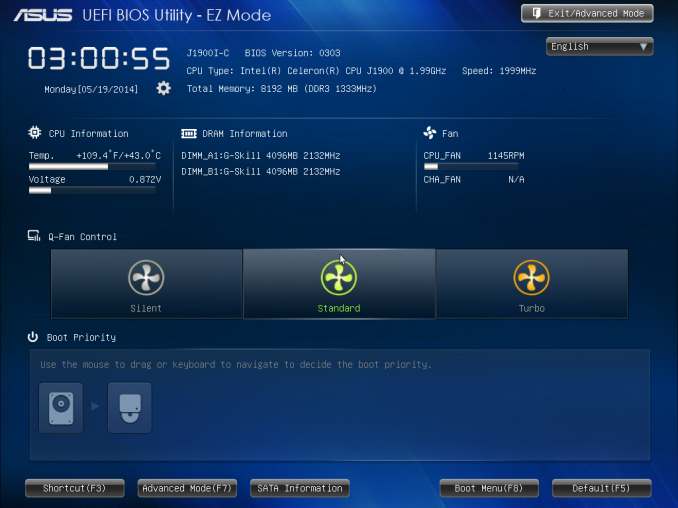
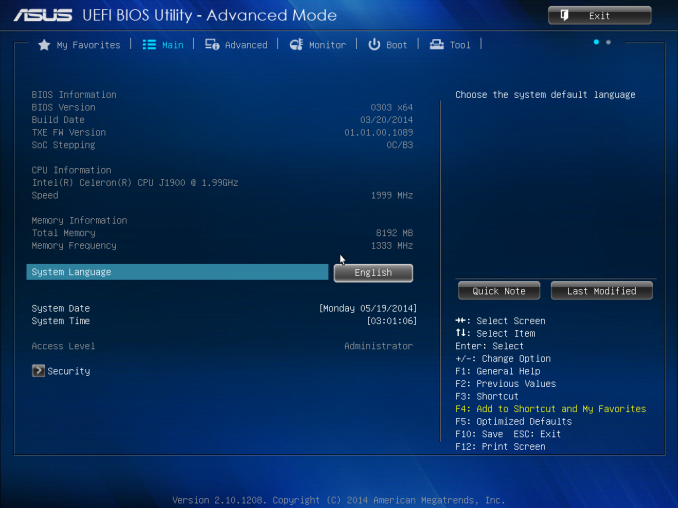

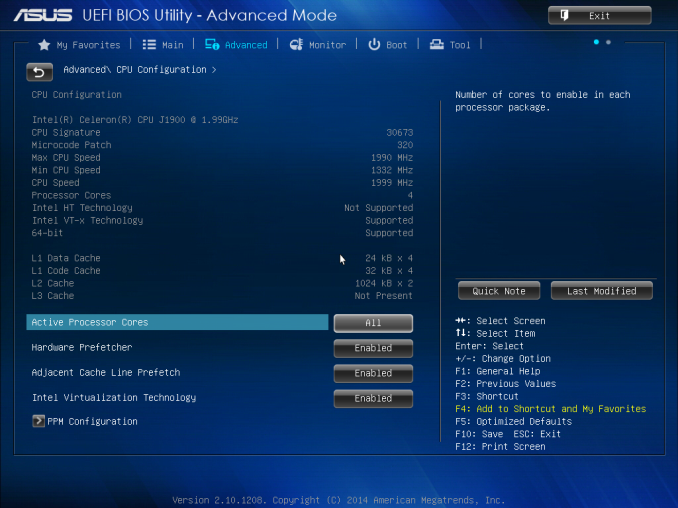
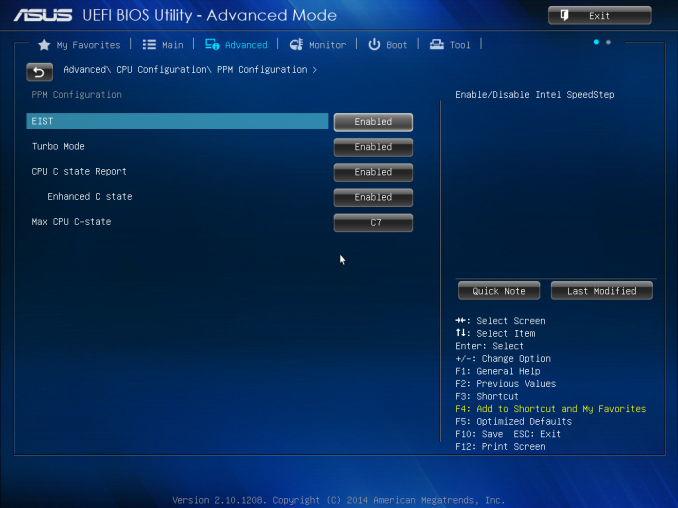
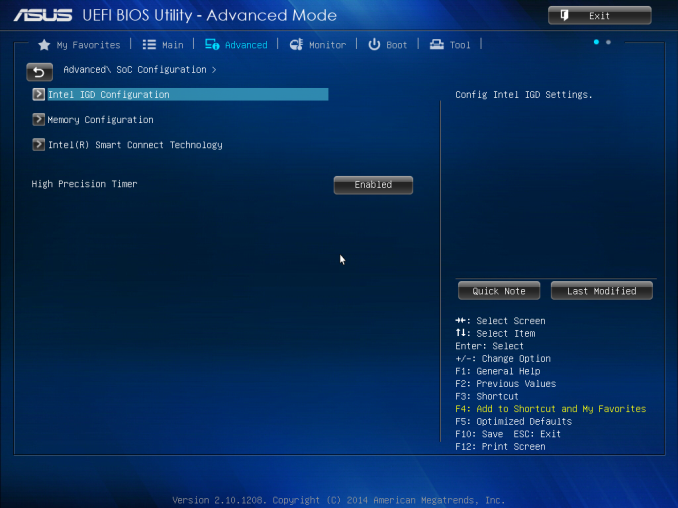
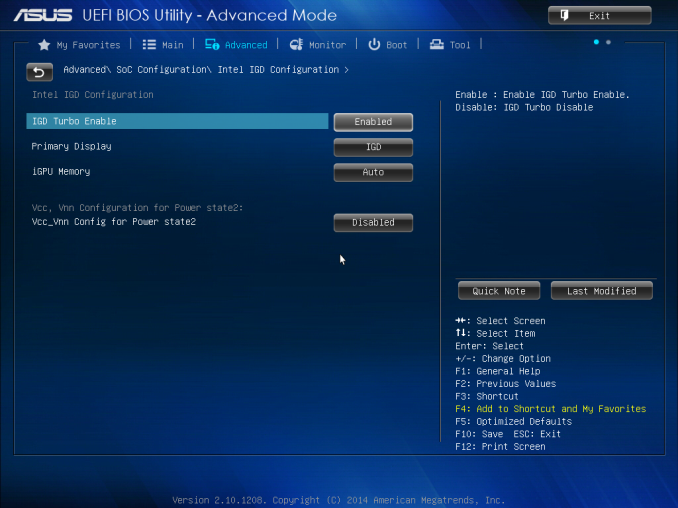
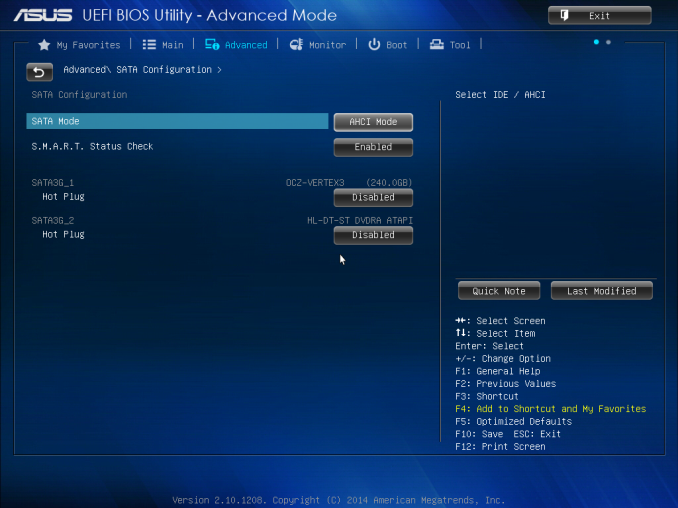
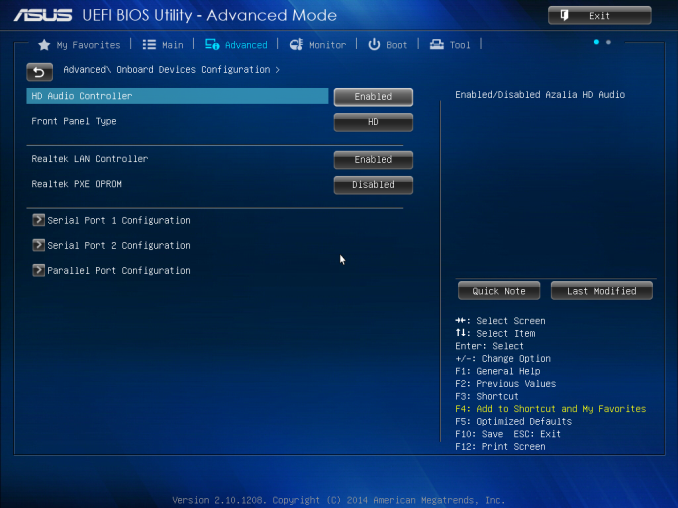
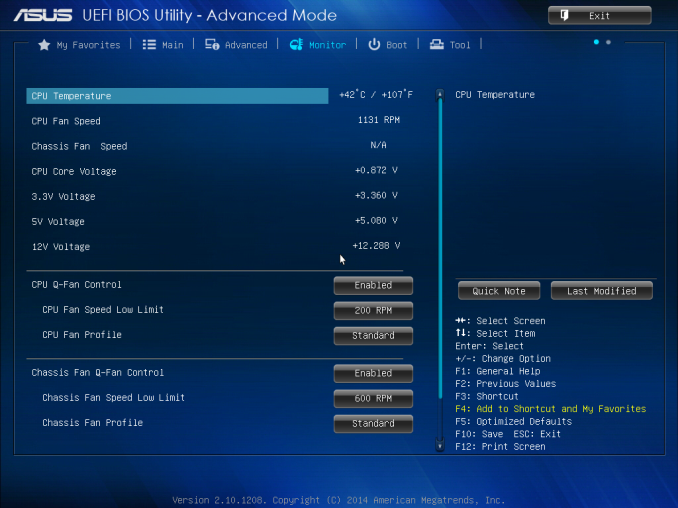
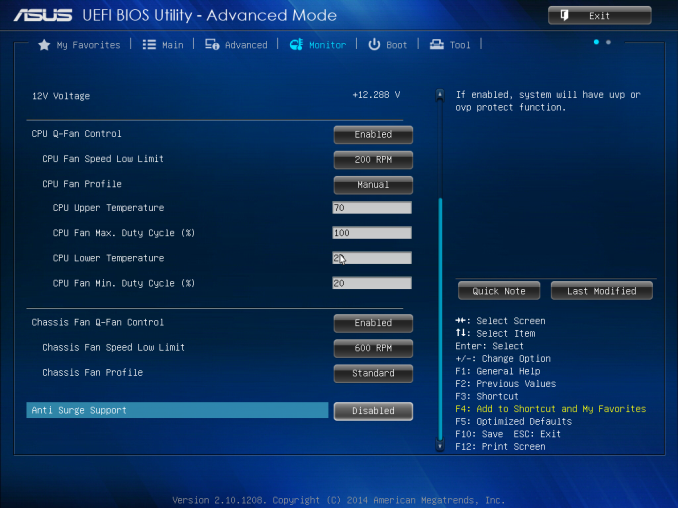
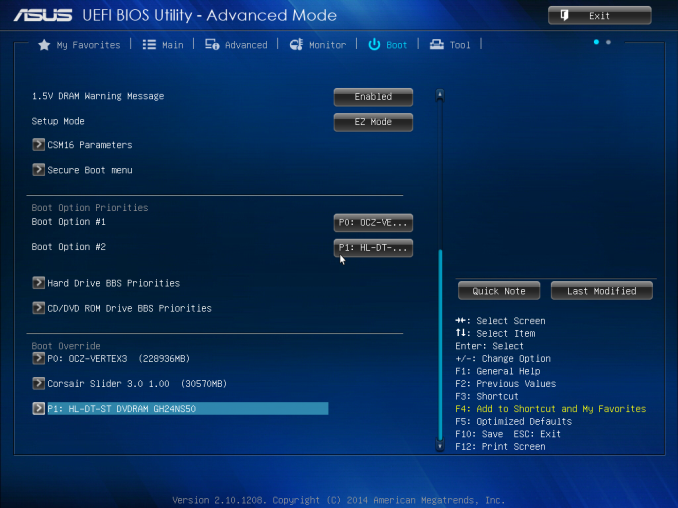
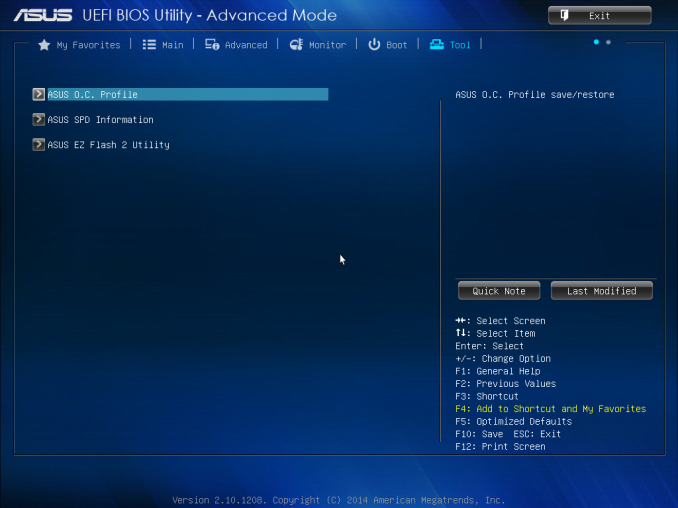








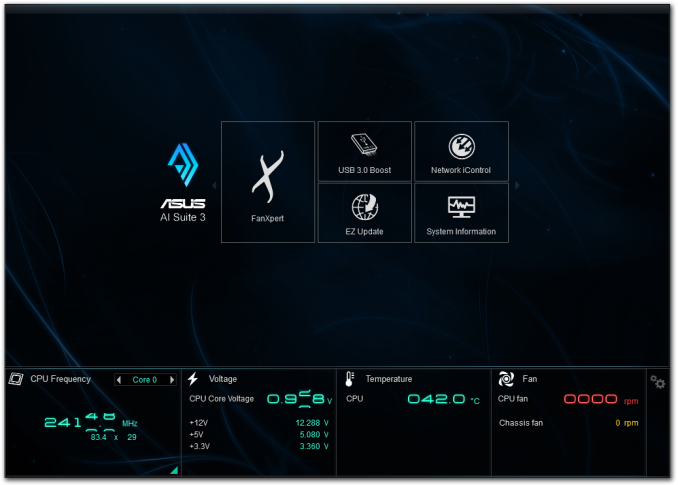
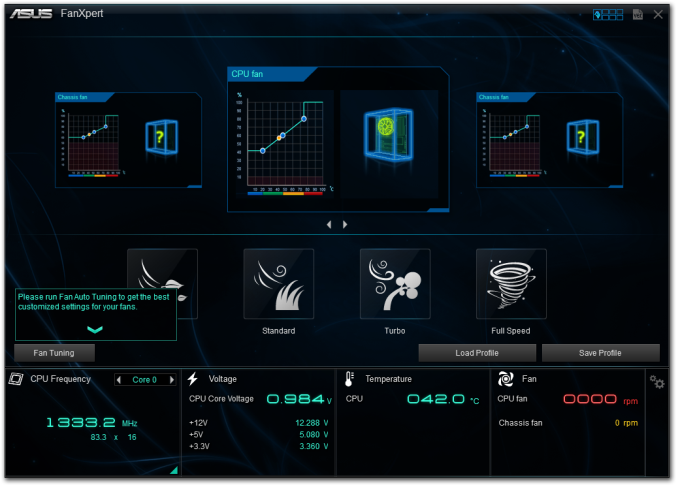
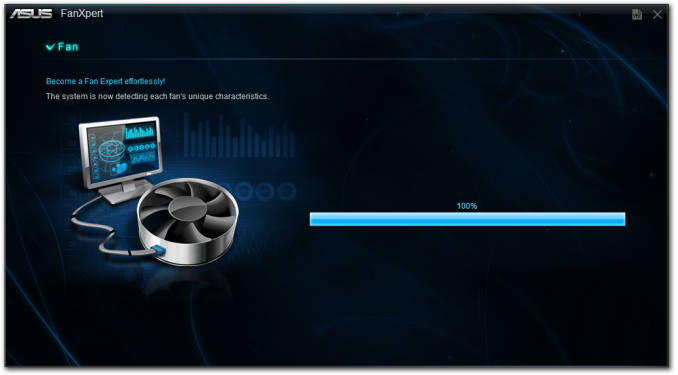
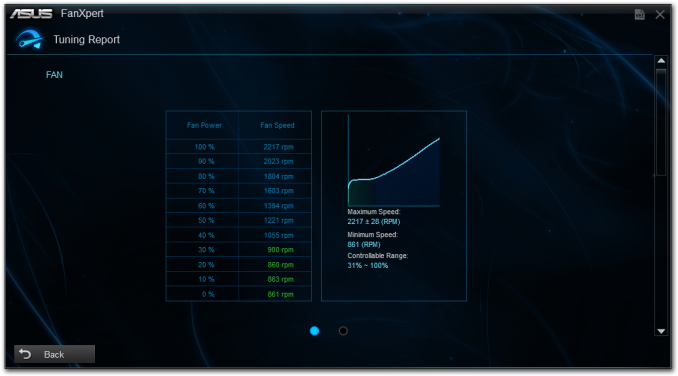
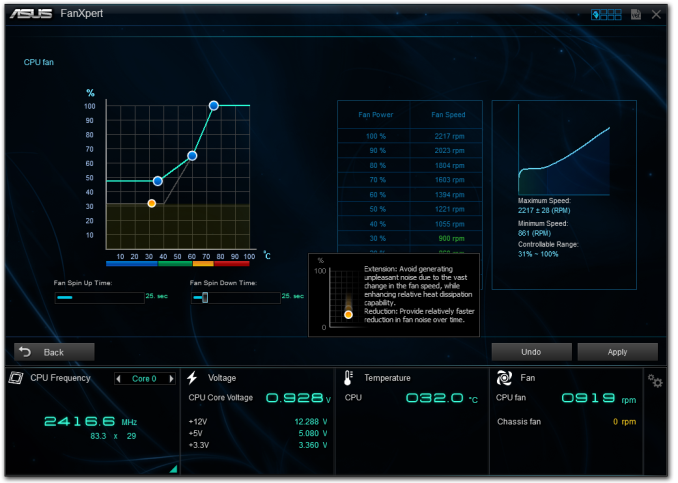
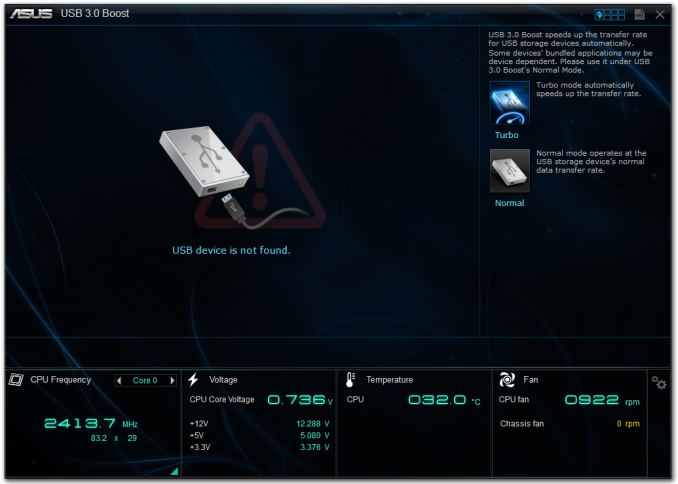















60 Comments
View All Comments
Antronman - Friday, October 17, 2014 - link
I'd much rather be using a Kabini for some mainstream browsing and multimedia.speculatrix - Friday, October 17, 2014 - link
the first UEFI firmware on the Gigabyte motherboard was just awful, the followup F2 was slightly better, but to make it useable you need the F3 version. Updating can be a problem, I started a discussion about it here:http://www.silentpcreview.com/forums/viewtopic.php...
there was a big discussion about baytrail motherboards on the silentpcreview forums, here:
http://www.silentpcreview.com/forums/viewtopic.php...
rstuart - Saturday, October 18, 2014 - link
"Load Delta Power Consumption" is just jargon - and you don't define it. Googling it return just one page of hits. If they are any indication, it total draw from the wall.But even that figure is meaningless unless you tell us what conditions the test was done under. Eg, was the test setup identical for all systems tested, not just the motherboards in question. What power supply was used? What does load was the system put under?
Also, a comparison of the system at idle versus under load would be interesting. Most of the time my systems are idle.
Bonesdad - Saturday, October 18, 2014 - link
White titled on a white background...valkyrie743 - Sunday, October 19, 2014 - link
the ASUS J1900I-C looks like nice for a simple XBMC box.Mvoigt - Sunday, October 19, 2014 - link
Just slap an Zotac geforce 610 PCI 1gb ddr3 in the pci slot and you got and decent machine for sligthly older games.... :) even never ones at low res....evident - Sunday, October 19, 2014 - link
I would have loved to see J2900 numbers in this article as well to represent the top end of these bay trails. I still don't care what anyone says, I still don't feel this is a viable platform for granny's daily web surfing and farmville activities, let alone a HTPC. you just cant justify miserable performance when you can step up to a sandy bridge celeron for way better performance.if you look at real world pricing for J1900 based machines, the only winners are the pc box manufacturers charging $200-300 for this garbage. you can easily pick up a haswell pentium or last generation ivy bridge pentium for that price if you wait for a clearance.
abufrejoval - Tuesday, October 21, 2014 - link
I'd love to see those, too. Even more I'd like to be able to actually purchase J2900 hardware, but I have yet to see any.dealcorn - Monday, October 20, 2014 - link
Several posters have suggested that Kabini may be more attractive than Silvermont. In the real world where companies report revenues quarterly, Baytrail-D and Baytrail-M took significant market share from AMD during the second quarter of 2014. The trend accelerated as Atom claimed increased market share during the third quarter and I believe Dr. Su projects this share loss trend will continue in the fourth quarter. The reasons this occurred are not discussed in the Article but are sort of obvious if you look at real word pricing and real word consumer preferences.Today, Newegg will sell you a AMD’s Kabini 5350 for $65 and a BIOSTAR AM1MHP motherboard with Gb Ethernet for $32 making the 5350 a $97 platform. Alternately, you could buy a ASRock Q1900M with a single Gb Ethernet connection for $70. The real world 5350 platform costs $27 (38%) more. I would argue that ASRock is a preferred brand name over Biostar and perceived brand quality does matter at the low end. Obviously, the 5350 has better graphics for gaming but the J1900 supports 1080p video or better in all major codecs. Because the J1900 is significantly cheaper and has fully adequate graphics for everyone but gamers, sales of the 5350 are limited to cheap dedicated gamers and the 5350 dominates the cheap dedicated gamers segment. Problem is, gamers tend not to be that cheap. For a few dollars more than $97 you can step up to a super gimped Intel big core solution with discrete graphics card and far greater game potential than the 5350 solution. In the real world, it does not help to dominate a market niche with trivial sales volume and the quarterly earning releases of AMD and Intel powerfully make this point.
As a side note, the J1900 motherboards tested in the Article feature dual NIC's and that is an expensive feature in this price class. By way of contrast, Newegg sells no AM1 motherboards with dual NIC's. Because J1900 is very efficient, some folks leave them powered on 24/7 so they can act as a passively cooled firewall/router download station. Finally, Intel does not use contra-revenue with either Baytrail-D or Baytrail-M, These are full margin products. Anyone who asserts otherwise just got hit kinda hard with the stupid stick.
silverblue - Monday, October 20, 2014 - link
I can buy a 5350 for about £40 and a Biostar AM1ML board for £20. An MSI J1900I costs a little under £60, so you can get into both for about the same price. I suppose it depends on features in the end.As it is, AMD should cut at least £5 off the RRP.